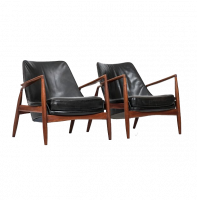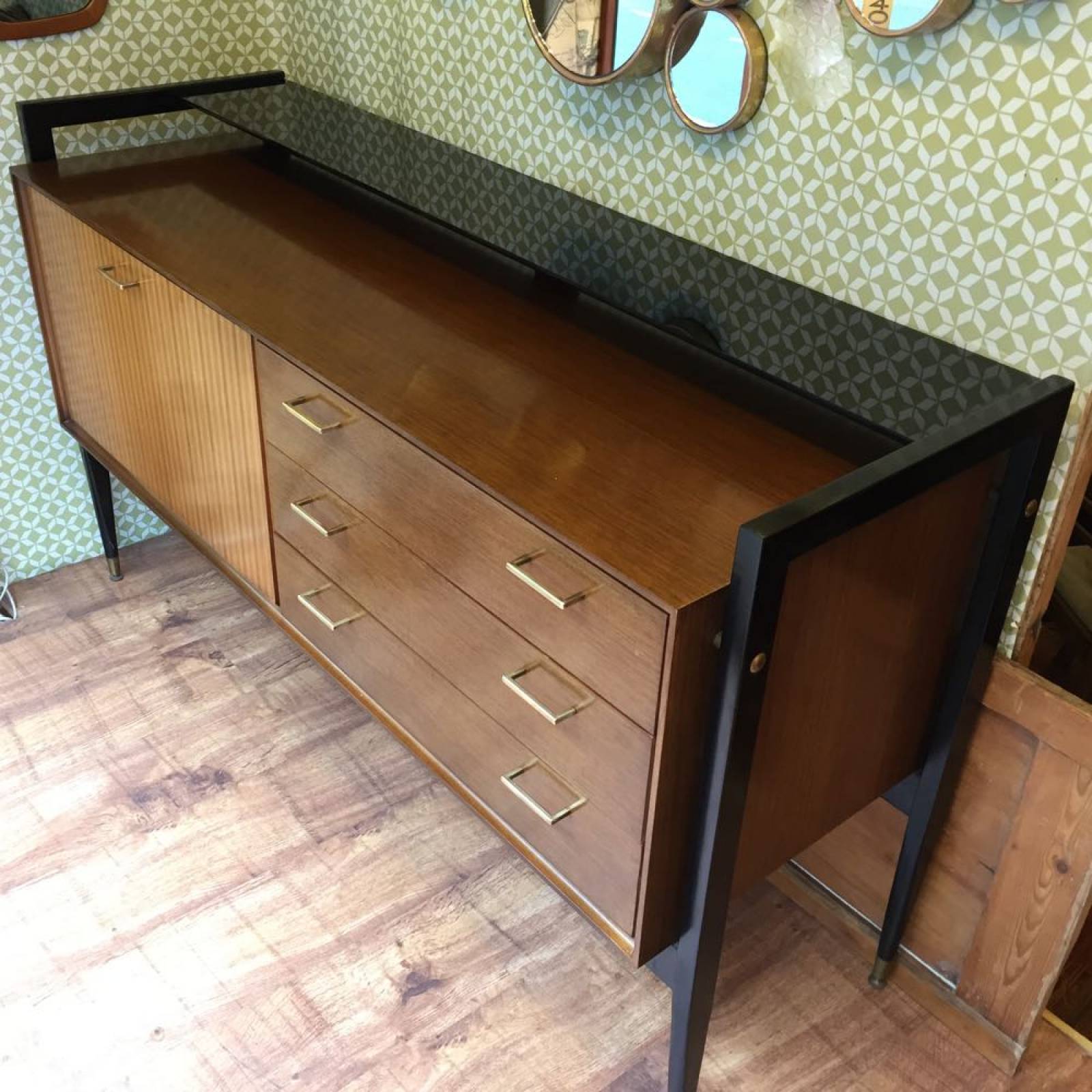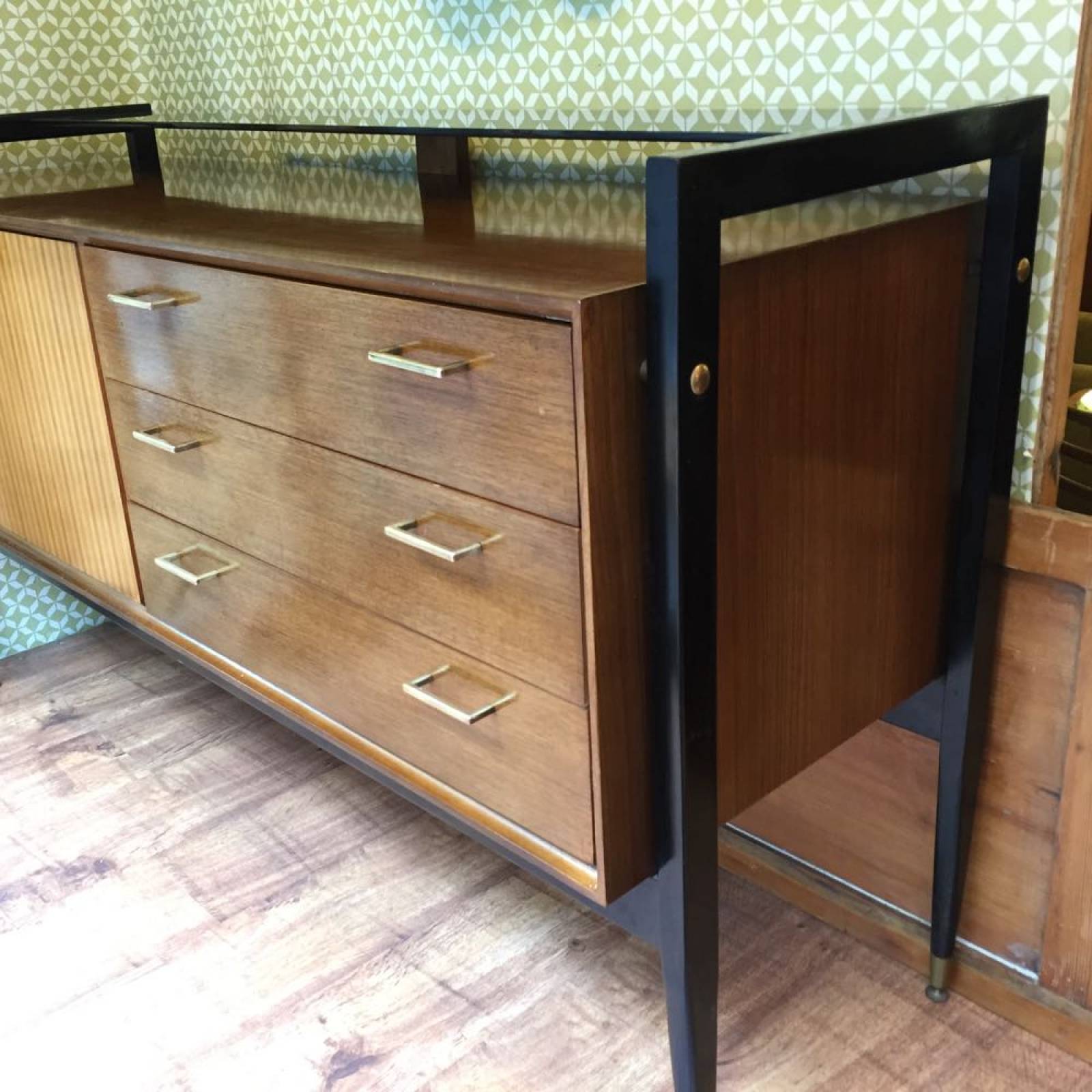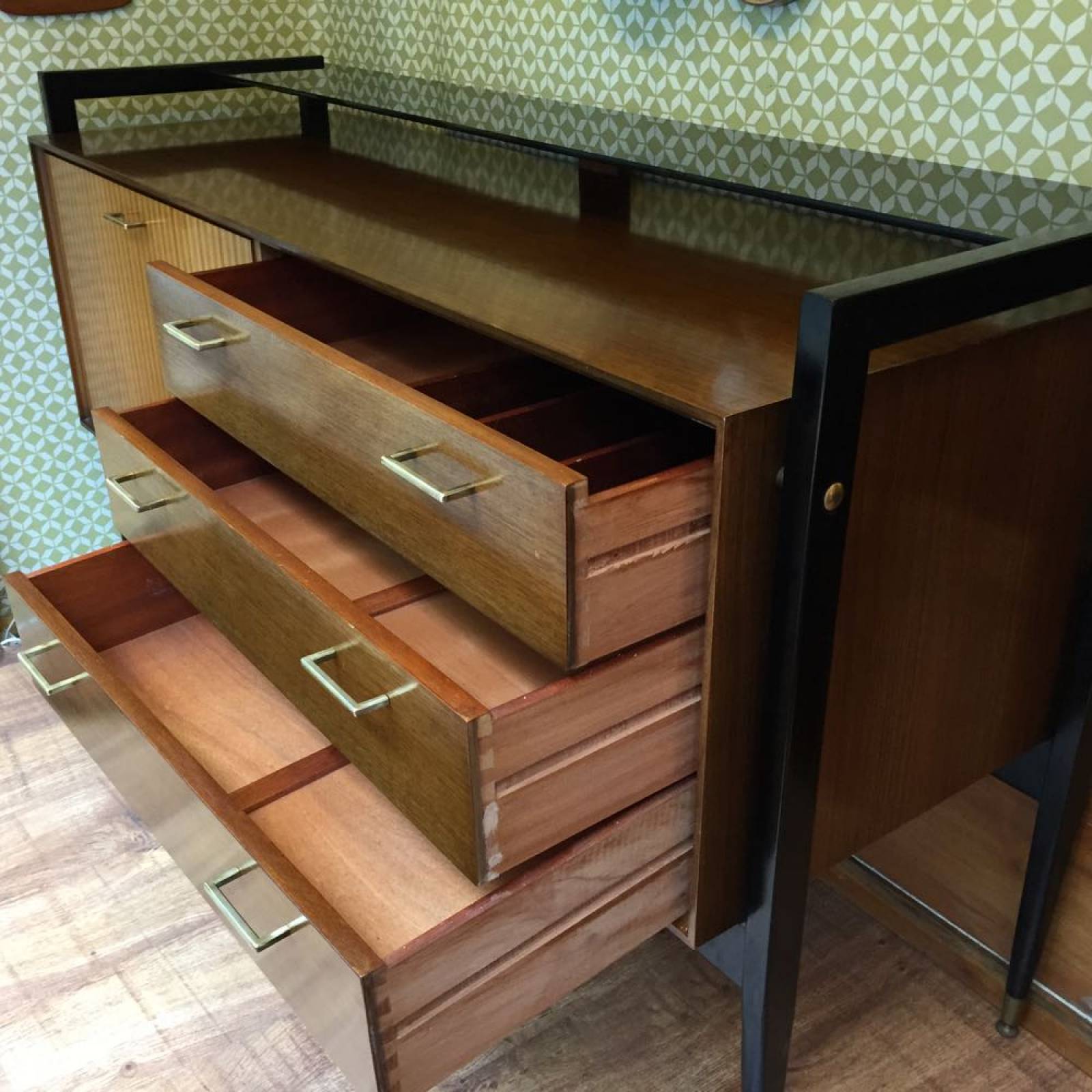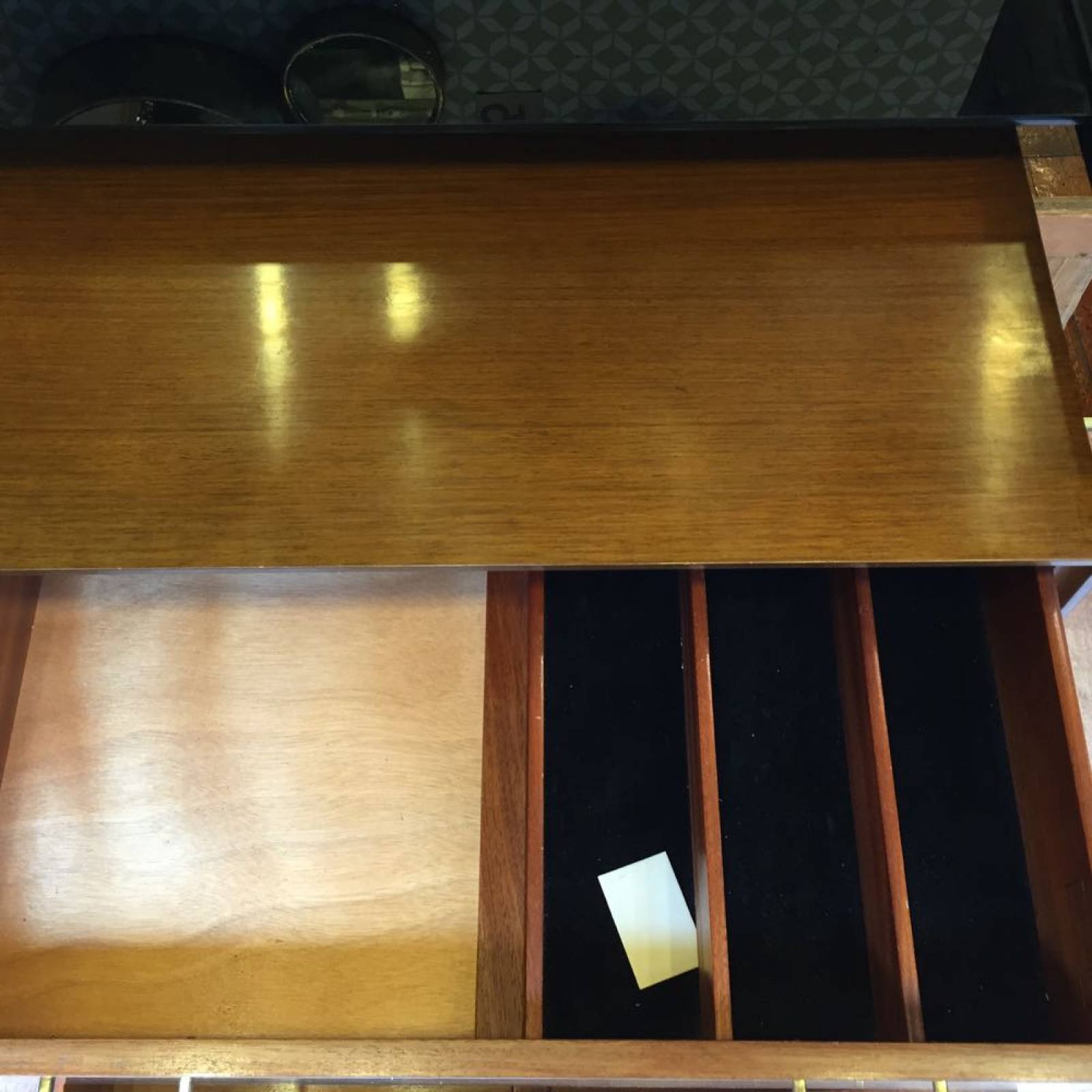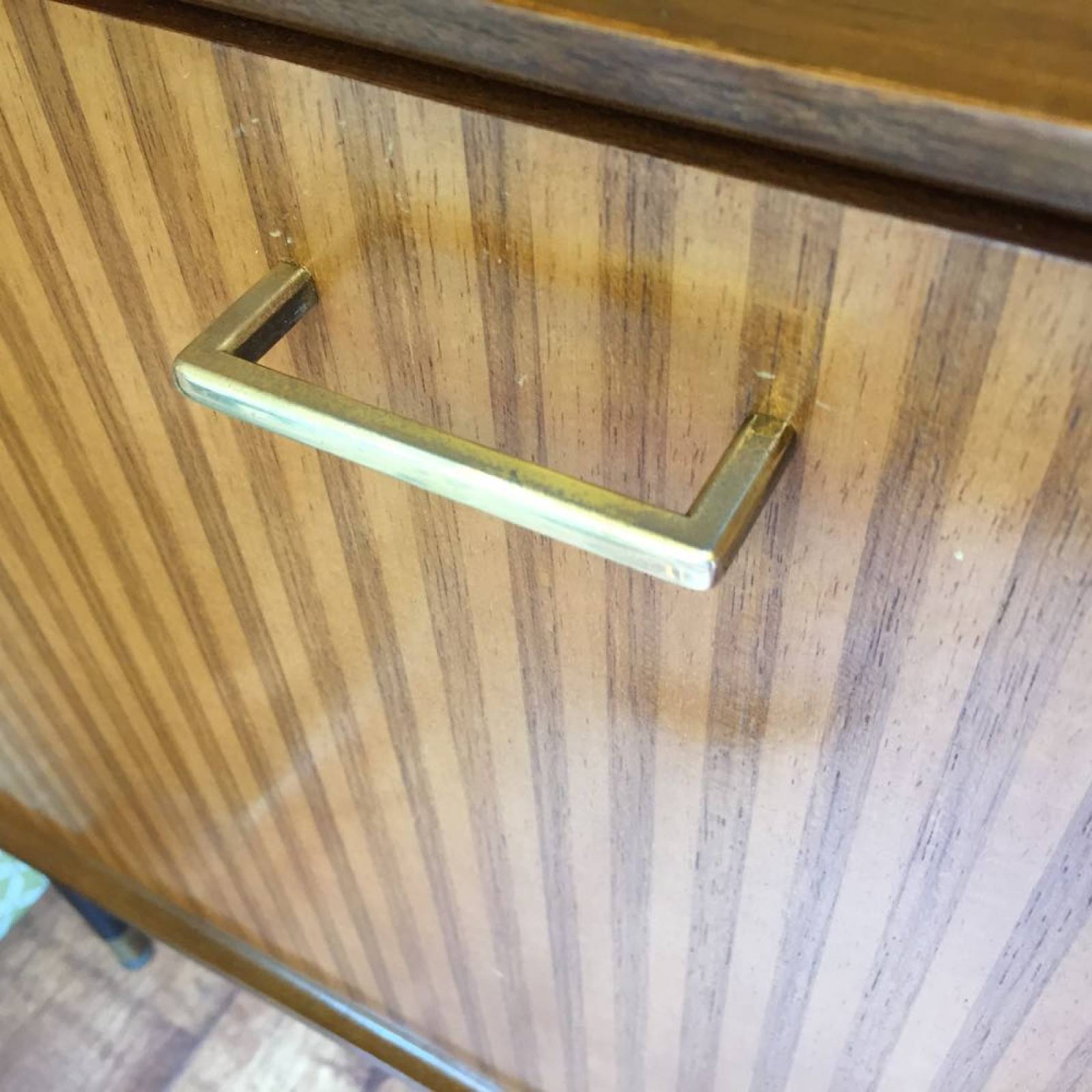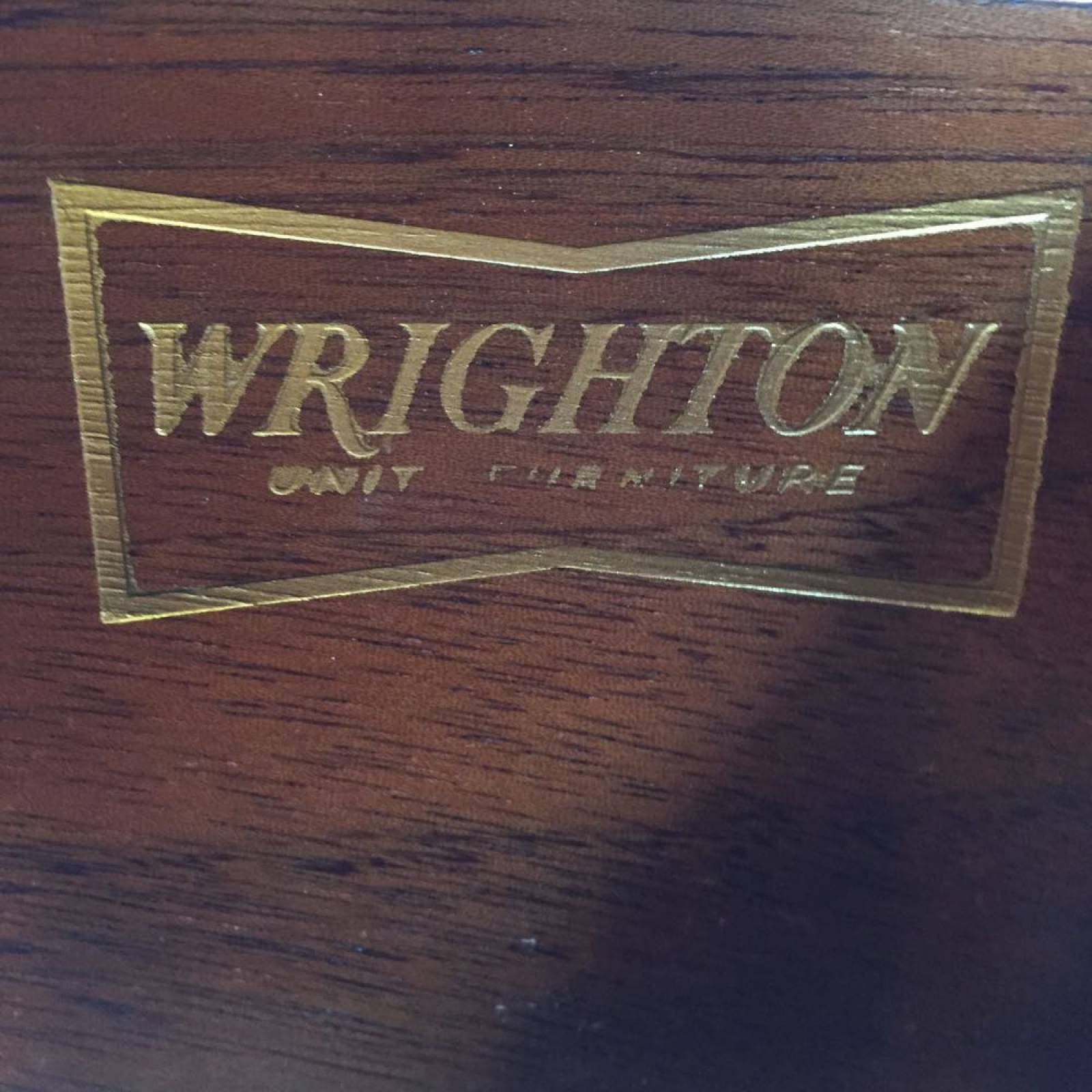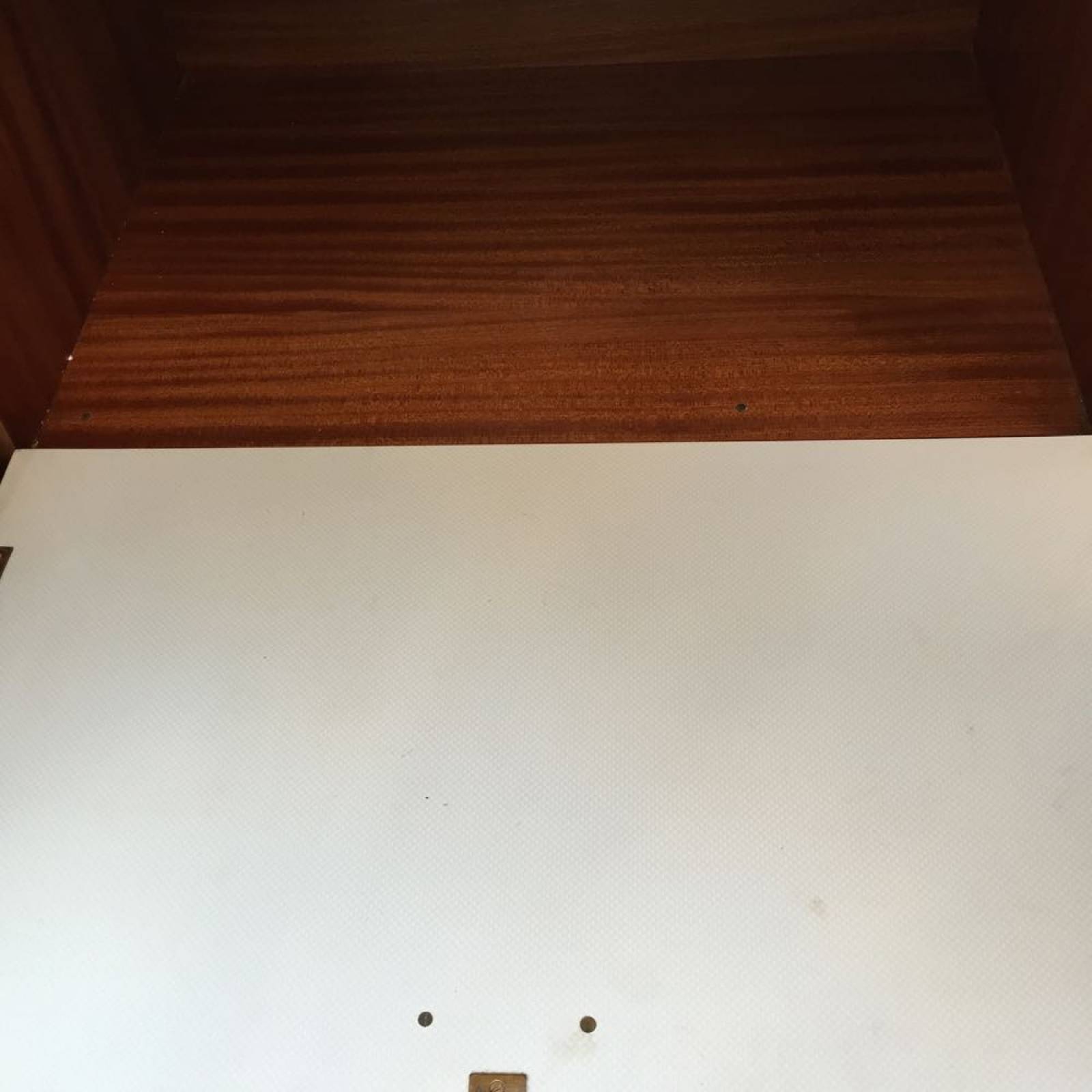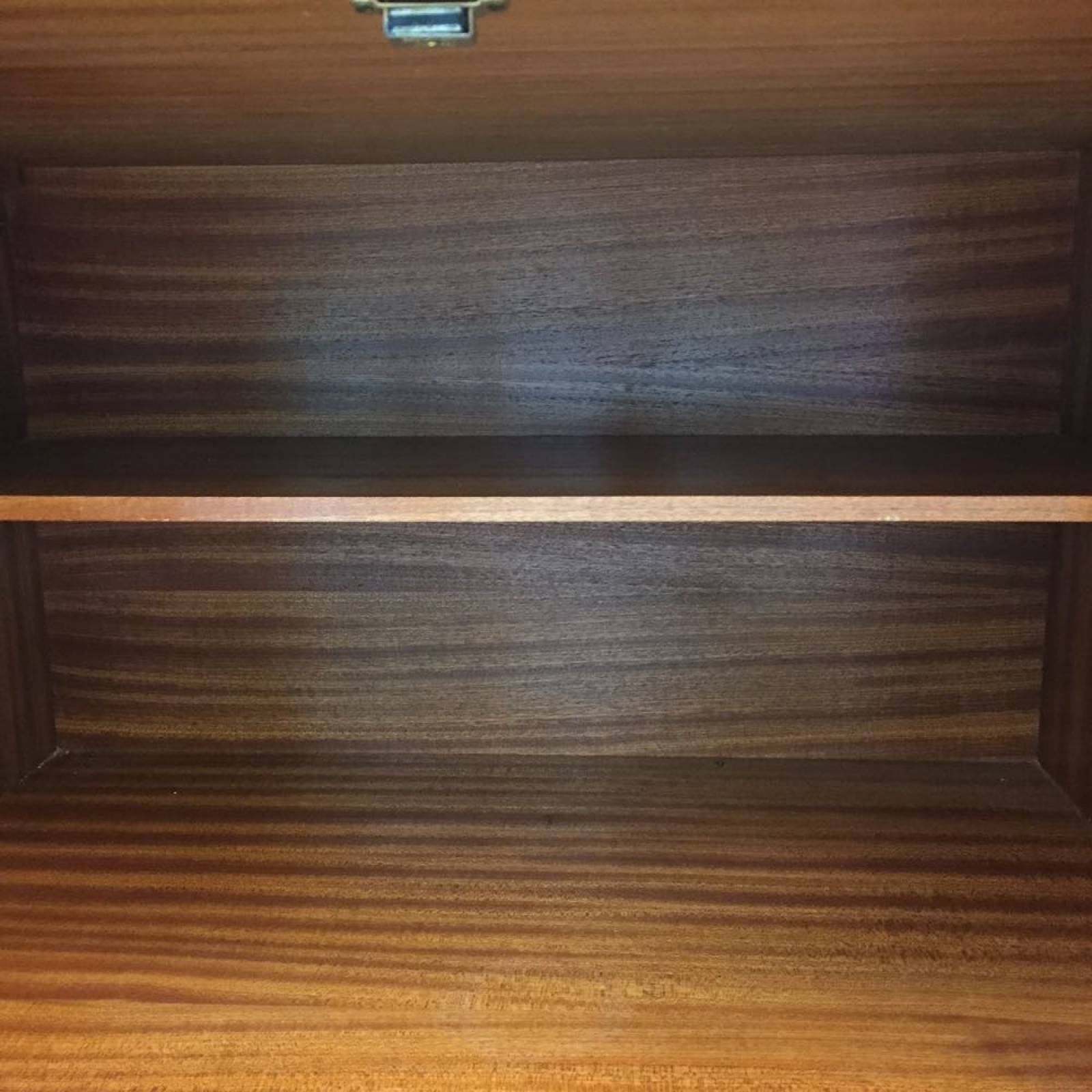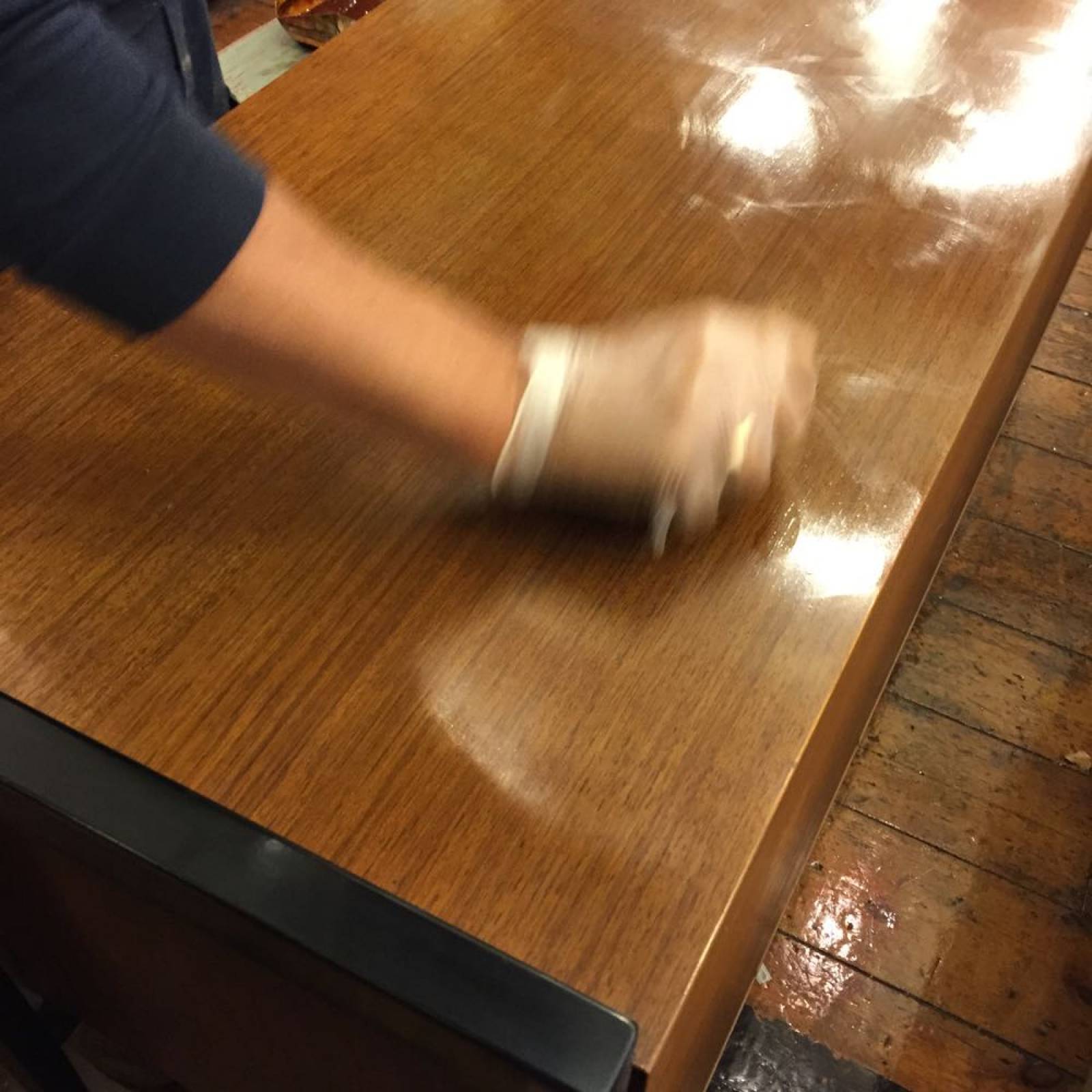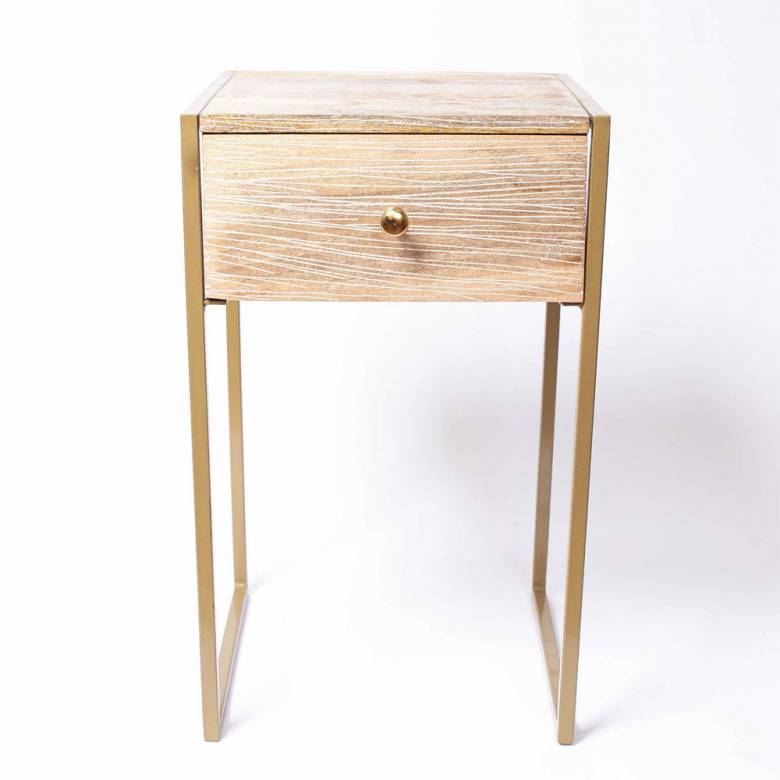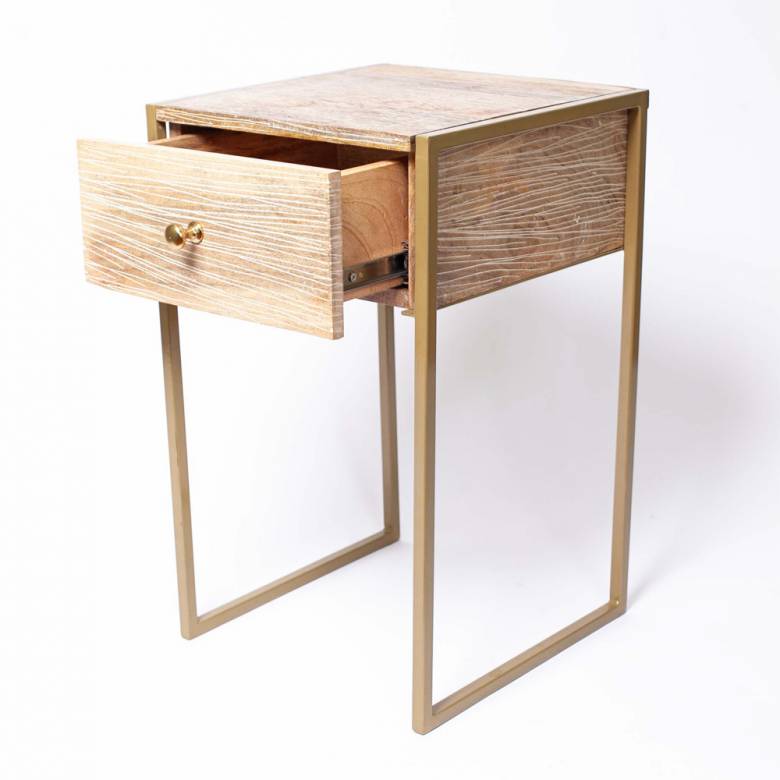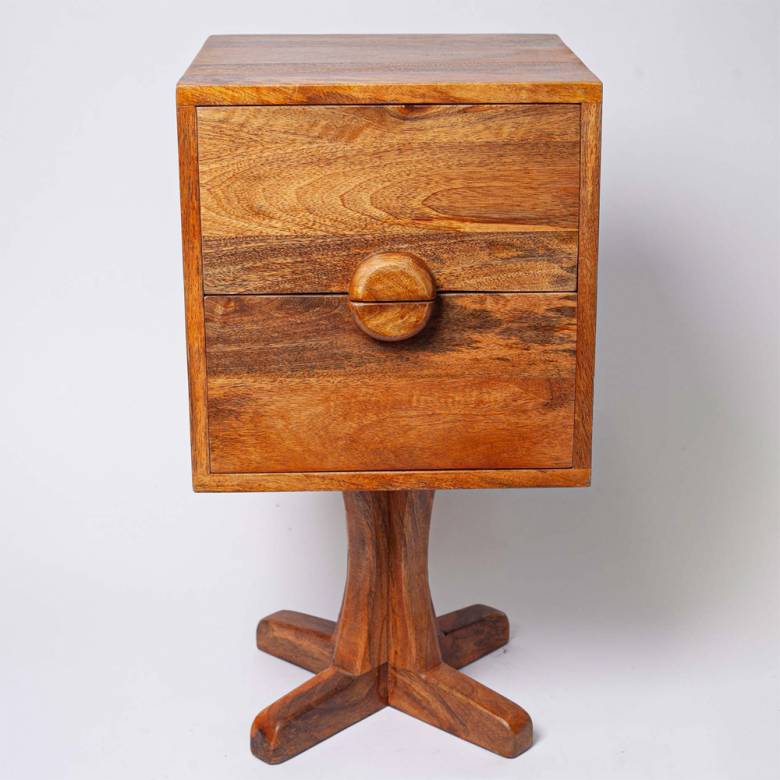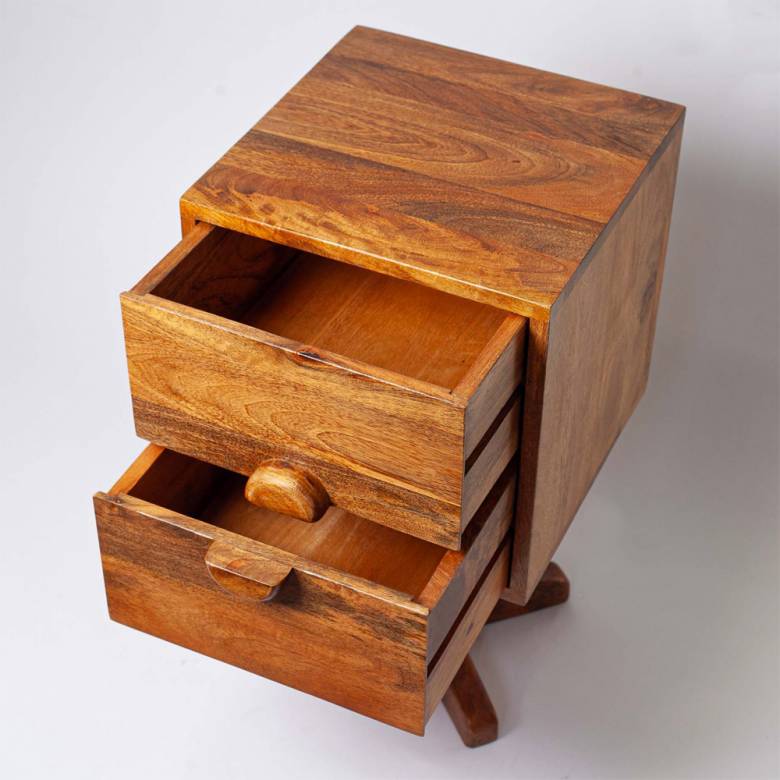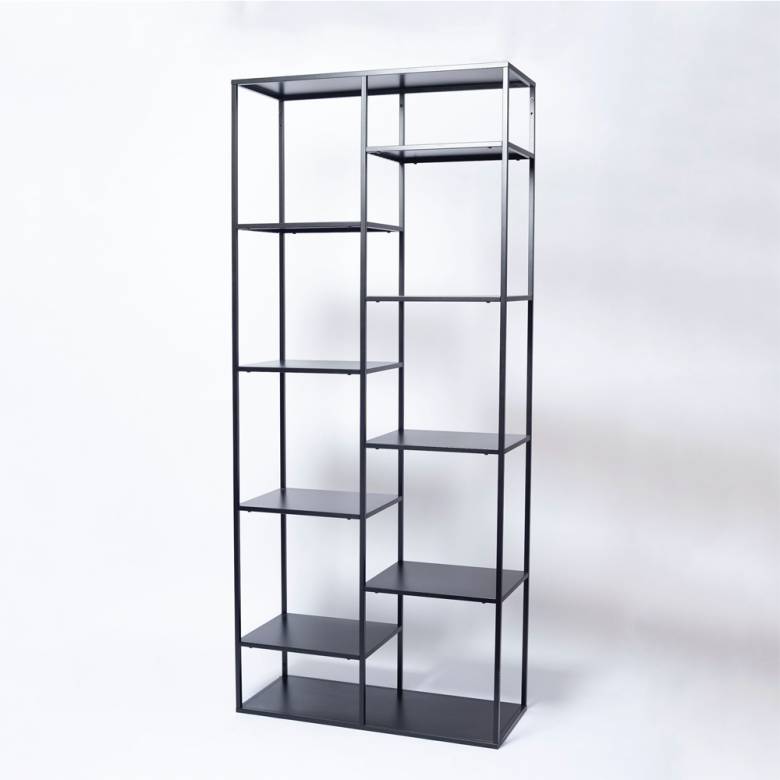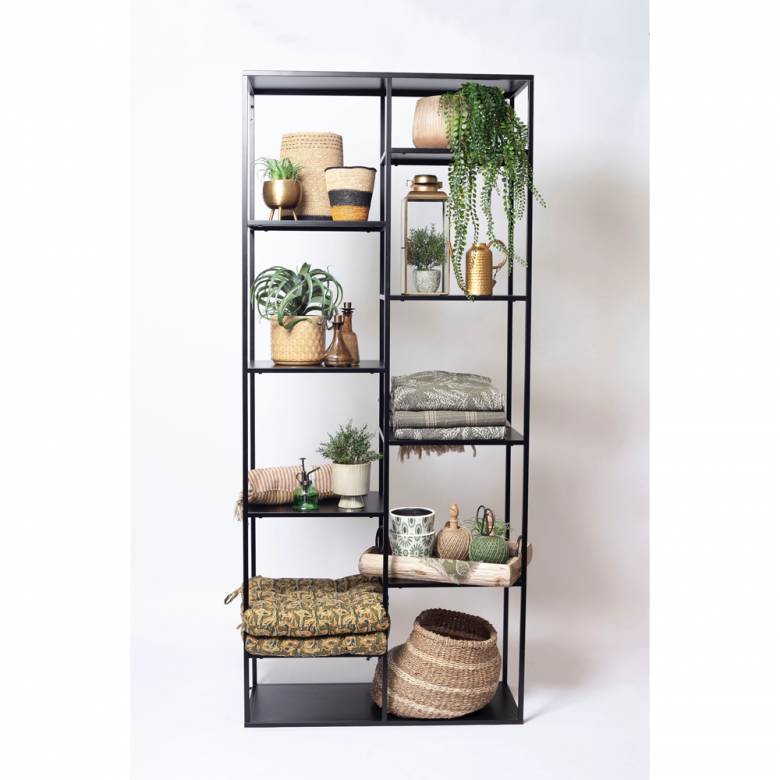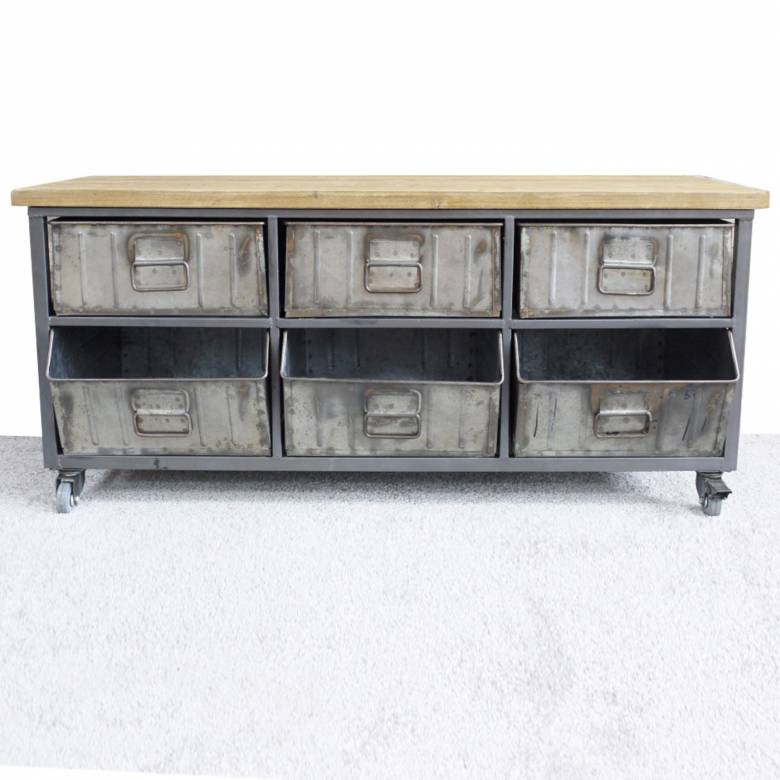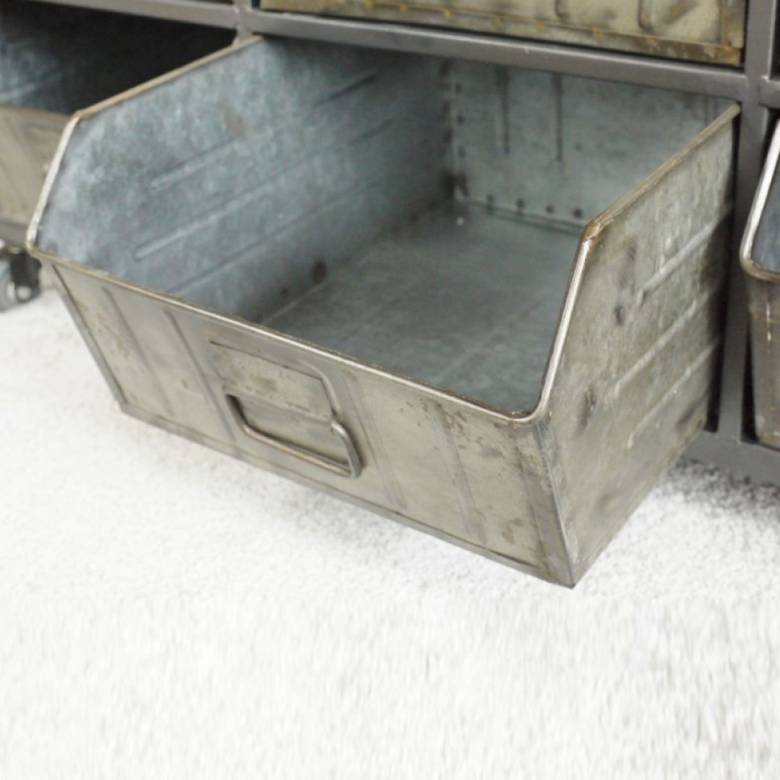
Teak sideboard with black Vitrolite shelf, made by Wrighton Unit Furniture in Walthamstow, circa 1960s.
This sideboard has some nice design features and would have been made originally to serve a kitchen or dining room as it features cutlery drawers and a drinks cabinet.
The sideboard body and top are teak veneer on engineered board, and are held by a solid wood frame and legs, both polished black. A black Vitrolite, or structural glass, shelf rests on the frame, above the main body of the sideboard. The unit has three drawers on its right hand side, the top of which is divided into a velour lined cutlery canteen. The drawer fronts are unusual in that they are both made from solid teak, and have a teak veneer at the front. The drawers have dovetail joints and solid teak runners. The left side of the sideboard features a cupboard with a fall front door, that opens to reveal a space finished to be a drinks cabinet, with a half shelf allowing tall bottles to be accommodated. The cupboard door has a marquetry front in a striped pattern, and a formica inside, allowing the door to be used as a shelf to make drinks. The legs are capped with brass feet, and slim brass handles adorn the front of the drawers and cupboards.
Vitrolite, or pigmented structural glass, also known as vitreous marble, is a high-strength coloured glass, widely used in the first half of the twentieth century to clad buildings, and as a material for signs, tables, and areas requiring a hygienic surface. Vitrolite was at first a name the glass was marketed under, but became so associated with the material, that it became a generic term. Vitrolite is really strong, with a compressive strength 40 times greater than marble. It fell out of favour in the middle of the twentieth century, and production of the glass in the UK had ceased by 1968.
Dimensions:
Sideboard: Width 155cm x Depth 49.5 x Height 89cm
Vitrolite Glass shelf: 148cm x 21cm
Details:
Sideboard is currently waiting to be revived in our restoration workshop.
Whilst this piece is in great condition, it is vintage, and as such has patination commensurate with its age.
All Restoration

